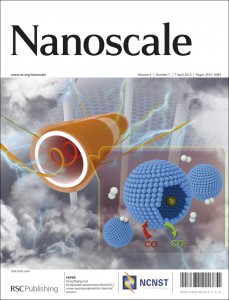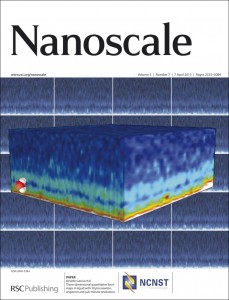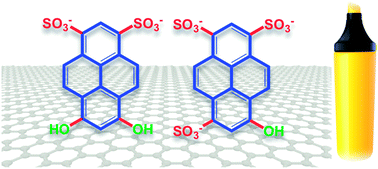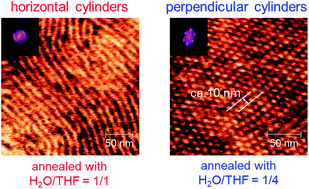This month sees the following articles in Nanoscale that are in the top ten most accessed for January:
Nanostructured carbon–metal oxide composite electrodes for supercapacitors: a review
Mingjia Zhi , Chengcheng Xiang , Jiangtian Li , Ming Li and Nianqiang Wu
Nanoscale, 2013,5, 72-88
DOI: 10.1039/C2NR32040A
Graphene transfer: key for applications
Junmo Kang , Dolly Shin , Sukang Bae and Byung Hee Hong
Nanoscale, 2012,4, 5527-5537
DOI: 10.1039/C2NR31317K
Recent advances in the efficient reduction of graphene oxide and its application as energy storage electrode materials
Tapas Kuila , Ananta Kumar Mishra , Partha Khanra , Nam Hoon Kim and Joong Hee Lee
Nanoscale, 2013,5, 52-71
DOI: 10.1039/C2NR32703A
Graphene synthesis: relationship to applications
Rebecca S. Edwards and Karl S. Coleman
Nanoscale, 2013,5, 38-51
DOI: 10.1039/C2NR32629A
Upconversion nanoparticles and their composite nanostructures for biomedical imaging and cancer therapy
Liang Cheng , Chao Wang and Zhuang Liu
Nanoscale, 2013,5, 23-37
DOI: 10.1039/C2NR32311G
Core–shell sulfur@polypyrrole composites as high-capacity materials for aqueous rechargeable batteries
Jie Shao , Xinyong Li , Li Zhang , Qunting Qu and Honghe Zheng
Nanoscale, 2013,5, 1460-1464
DOI: 10.1039/C2NR33590E
Advances in 2D boron nitride nanostructures: nanosheets, nanoribbons, nanomeshes, and hybrids with graphene
Yi Lin and John W. Connell
Nanoscale, 2012,4, 6908-6939
DOI: 10.1039/C2NR32201C
Magnetic Fe3O4–graphene composites as targeted drug nanocarriers for pH-activated release
Xiujuan Fan , Guozheng Jiao , Wei Zhao , Pengfei Jin and Xin Li
Nanoscale, 2013,5, 1143-1152
DOI: 10.1039/C2NR33158F
Dopamine as the coating agent and carbon precursor for the fabrication of N-doped carbon coated Fe3O4 composites as superior lithium ion anodes
Cheng Lei , Fei Han , Duo Li , Wen-Cui Li , Qiang Sun , Xiang-Qian Zhang and An-Hui Lu
Nanoscale, 2013,5, 1168-1175
DOI: 10.1039/C2NR33043A
Self-assembly of hierarchical star-like Co3O4 micro/nanostructures and their application in lithium ion batteries
Li Li , Kuok Hau Seng , Zhixin Chen , Zaiping Guo and Hua Kun Liu
Nanoscale, 2013,5, 1922-1928
DOI: 10.1039/C2NR33223J
Why not take a look at the articles today and blog your thoughts and comments below.
Fancy submitting an article to Nanoscale? Then why not submit to us today!
Comments Off on Top 10 most-read Nanoscale articles in January
 Collaborators in the US and China have demonstrated that by changing the diameter of cellulose fibres in nanopaper they can tailor its optical properties for use in optoelectronics.
Collaborators in the US and China have demonstrated that by changing the diameter of cellulose fibres in nanopaper they can tailor its optical properties for use in optoelectronics.










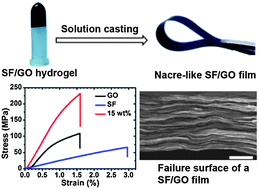
 Camouflaging nanoparticles so that they are not attacked by the immune system is a major challenge in developing long-circulating, effective drug-delivery vehicles. Attaching CD47, a transmembrane protein that serves as a universal molecular ‘marker-of-self’, to the surface of nanoparticles is one way to enable active immune evasion. However, functionalising the particle surface evenly and with uniformly oriented protein is very difficult.
Camouflaging nanoparticles so that they are not attacked by the immune system is a major challenge in developing long-circulating, effective drug-delivery vehicles. Attaching CD47, a transmembrane protein that serves as a universal molecular ‘marker-of-self’, to the surface of nanoparticles is one way to enable active immune evasion. However, functionalising the particle surface evenly and with uniformly oriented protein is very difficult.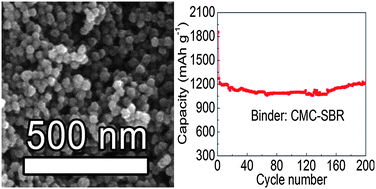
 The lys-dex conjugates were spherical in shape with a hydrodynamic radius of 200 nm. Due to the stability of the lys-dex nanogels against changes in pH and ionic strength, in addition to the net positive charge of the lys core produced at pH < 10.7, the nanogels are a suitable substrate for the synthesis of gold nanoparticles.
The lys-dex conjugates were spherical in shape with a hydrodynamic radius of 200 nm. Due to the stability of the lys-dex nanogels against changes in pH and ionic strength, in addition to the net positive charge of the lys core produced at pH < 10.7, the nanogels are a suitable substrate for the synthesis of gold nanoparticles.